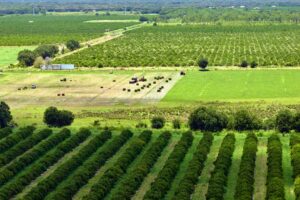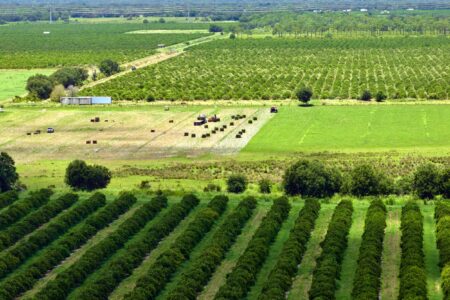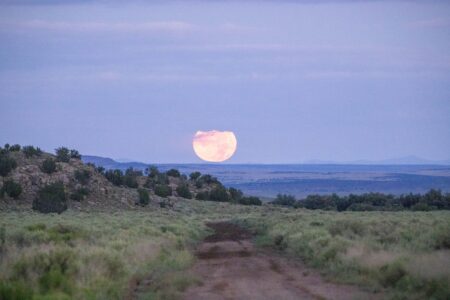In a recent article, I examined USDA’s Swampbuster Act, which sets out conservation practice requirements for farmers who participate in USDA programs. It included different situations where farmers may run afoul of the act and the penalties that can be imposed for violations. In this article, I will discuss options that exist for farmers facing a violation under the act. I cannot stress enough the importance of seeking professional help should a violation occur.
What’s the Penalty?
If you are found to be in violation of the Swampbuster Act not only will you lose eligibility for USDA program benefits, you must repay past benefits. I have seen farmers faced with paying back millions of dollars due to a violation not being detected for years, if not decades, by NRCS. In addition to returning any money you received, you will have to pay back money you never directly received in the form of crop insurance premium subsidies.
The stakes are high and it is no time for do-it-yourself lawyering. The No. 1 reason for not getting help, according to surveys, is a lack of local attorneys well-versed in the Swampbuster Act. Go online and find someone who can help you, even if they are several states away. Since USDA programs are federal programs, an attorney does not have to be licensed in your state to work with you in most cases. In the post-COVID era, FSA accommodates distance with phone and video hearings on wetland violations, so distance from legal counsel shouldn’t be an issue.
Wetland Violations
What happens to cause wetland violations? There are two main culprits:
- A wetland conversion where lands not currently farmed are cleared and/or tiled to allow for crop production.
- A planting violation, which is the planting of an agricultural commodity on a converted wetland.
In most cases, both violations occur: First, the wetland is cleared, then crops are planted. If a wetland is converted, you are ineligible for program benefits for each and every year it was capable of crop production, past, present, and future, regardless of whether an agricultural commodity is actually planted on it. For planting violations, ineligibility occurs for each year an agricultural commodity is planted on the wetland.
Exceptions to the Rule
Fortunately, the act provides for various exemptions. Like in the game of Monopoly, an exemption is your “get out of jail free” card. In the wetlands game, I call it the “get out of the USDA’s swamp free” card.
Once NRCS believes a wetland violation occurs, it notifies the Farm Service Agency (FSA). From there, FSA will notify you and let you know you’re ineligible for program benefits.
At this point, you can ask for a Minimal Effect Exemption (MEE) from NRCS. If granted, NRCS determines the conversion has no meaningful or measurable effect on the overall wetlands in adjoining areas.
For example, if a quarter-acre grove of trees is located in the middle of a field, it may be considered a wetland. Even if that is the case, NRCS could determine the conversion of that grove does not affect surrounding wetlands. In this case, an MEE could be granted.
There are two types of MEE determinations.
- Pre-Conversion Determination: If you are seeking to convert a wetland, you can ask NRCS to make a minimal effect determination before any work is done. NRCS is required to make a determination if an MEE is warranted.
- Post-Conversion Determination: You are also allowed to seek minimal effect determinations after a wetland has already been converted. In this case, the burden will be on you to demonstrate the effect is minimal to the satisfaction of NRCS.
Unfortunately, the criteria for a minimal effect designation varies by state. One farmer could be granted an MEE in Indiana, but another may be denied in Arkansas, even if the circumstances are identical.
If an MEE is granted, it is the golden ticket out of the swamp, alleviating the violation. It almost always pays to at least ask for a minimal effect determination to ensure that a violation is, in fact, a violation. If the MEE is granted, the converted area can be farmed.
Unintentional Violation
The most common exemption is a Good Faith Exemption (GFE), where USDA essentially says, “Yes, you violated Swampbuster, but you really didn’t mean to, so we’re going to give you a pass.” This is also a golden ticket out of the USDA swamp, but there are several criteria the agency must examine before a GFE is granted.
- Were the characteristics of the site such that you should have been aware that a wetland existed on the land? If you convert a pristine wetland with cattails and ducks, you’re probably out of luck. However, most wetland conversions I have seen involve land that the common person would not view as a wetland. Farmers are generally not versed in NRCS’s definition of a wetland, so if the converted area lacks the obvious characteristics of a wetland, you will likely pass this criterion.
- Had NRCS informed you about the existence of a wetland on the subject land? This gets a little murky. NRCS may have told you something generic like, “There are some wetlands on that farm” versus “That area right there is a wetland.” In the vast majority of cases I have been in, the farmer had no indication from NRCS of the existence of any wetlands on the farm. If this is the case, you pass this criterion.
- Even if you did not convert the wetland, did you plant an agricultural commodity on converted wetland when you should have known that a wetland previously existed on the subject land? This criterion deals with planting violations and most often comes into play if you converted a wetland prior, or someone else did prior, and you go ahead and plant.
- Do you have a record of violating this or other federal, state, or local wetland provisions? Over the years, I have found this seems to be the heaviest of the criteria. If it is your first violation, you stand a decent chance of getting a GFE, even if one of the other five criteria go against you. If you have had prior violations, in my opinion, that will hurt your case. A GFE is still possible, but I believe the other four criteria would need to really weigh in your favor to overcome prior violations.
- Is there other information that demonstrates you acted with the intent to violate the wetland provisions of this land? I’ve only seen this count against a farmer when the he had good reason to believe the converted area was a wetland or did something to try and hide the conversion.
Unlike an MEE, if a GFE is granted, you will not be allowed to farm the converted area. Instead, you must enter into a restoration plan NRCS to restore the wetland or mitigate via the purchase of wetland credits, creating new wetlands, or other measures.
Who’s to Blame?
Another exemption is a Third-Party Exemption (TPE), where someone else does something that causes the conversion. In one case I was involved with, a neighbor replaced a large amount of tile, causing a wetland area on my client’s land to drain. After that, the land was able to be farmed, so he planted it. My client was cited for a violation, but we were able to show it was the neighbor’s tiling activities that caused the wetland to go dry, so he qualified for a TPE for the conversion violation.
A more common scenario is when a landlord decides to convert a wetland. Under FSA rules, the farmer is presumed to be in control of the farm. Try telling that to a landlord who wants to remove 20 acres of woods so he can get more yearly rent. If a farmer can’t convince the landlord not to convert a wetland area, and the conversion occurs, a TPE may offer relief for the farmer who is held responsible for the conversion.
Don’t Fight Alone
While other exemptions do exist, in my experience, these are the most common. No matter which exemption is granted, and whether the land is allowed to be farmed or not, you will not have to repay past program benefits and will remain eligible for future benefits.
Remember, the provisions of Swampbuster offer lifelines out of the USDA swamp. Success generally comes down to getting the correct professional help, seeking the most applicable exemption, and showing that you pass the necessary criteria for that exemption.
Next time, I will talk about the appeal process.
These articles are for general information purposes only and should not be construed as specific legal advice or to create an attorney-client relationship. Laws vary among states and information contained in this article may not be applicable to your state. If you have a legal issue, you should contact an attorney.
John J. Schwarz, II, is a lifelong farmer and has been an agricultural law attorney for 20 years and is passionate in helping farm families with legal matters. Natalie Boocher, contributed to this article, and is an elder law attorney assisting clients with a wide range of long term care planning and asset preservation, contributed to this article. They can be reached at 1-844-FARMLAW and thefarmlawyer.com. Go to farmlegacy.blogspot.com for past articles.


:max_bytes(150000):strip_icc()/Lee-Lubbers-Wheat-August-2024-South-DakotaIMG_7952-79244c166fac424baa84dccc18be6e32.jpeg)

:max_bytes(150000):strip_icc()/fish-habitat-and-jetty-construction-2048x1536-3f12a1341a894afdb0a343e5db33b641.jpg)


:max_bytes(150000):strip_icc()/Wetland-Conservation-Indiana-2-2000-8e1d2649f7604bb58dfb1b25c60e46fd.jpg)



:max_bytes(150000):strip_icc()/101485674_corn-5d814390db764fcdaa3d3c1e82604454.jpg)